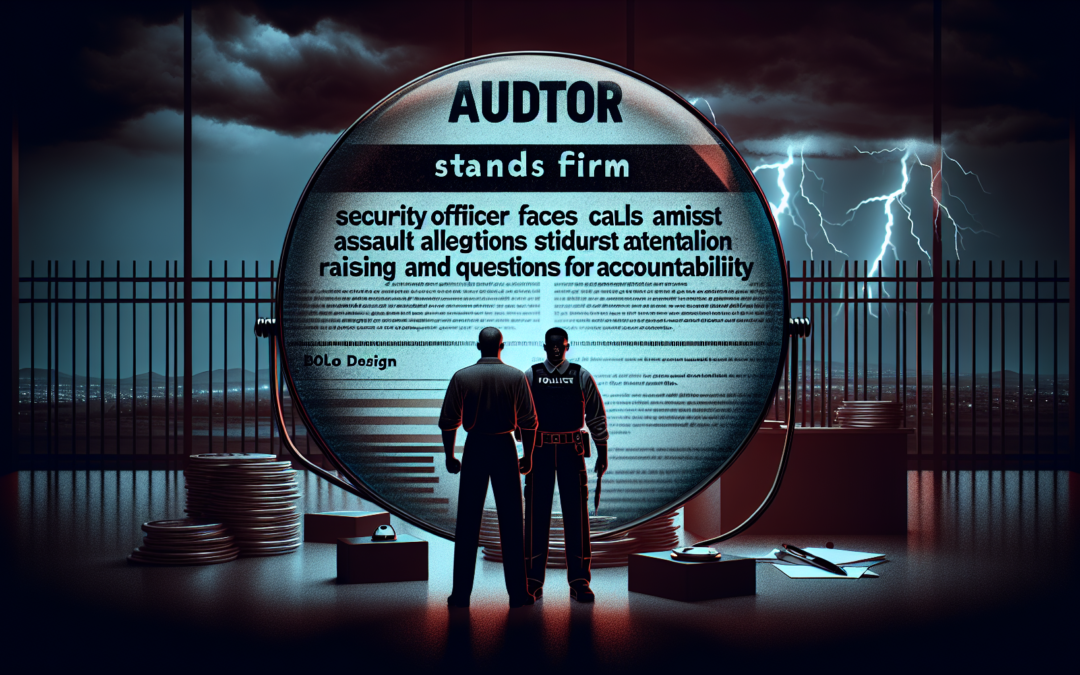Navigating the Labyrinth of Accountability: A Law Enforcement Perspective
In a world where every moment can be captured, judged, and dissected by millions, law enforcement officers find themselves operating under an unparalleled level of scrutiny. It is amidst this environment that tensions flare, perceptions diverge, and the need for a nuanced understanding of both the law and public expectations becomes fundamental. The recent First Amendment audit incident, dissected by John Ligato in his insightful show here, serves as a powerful reminder of the multifaceted challenges our security forces confront.
From their first day at the academy, police officers are instructed in the daunting balance of maintaining public safety while respecting individual freedoms. This dichotomy creates a high-wire act, where any misstep, benign or otherwise, is met with the relentless gaze of the public and media. The scenario discussed in John Ligato’s recent episode strikes at the core of this tension—a confrontation between an assertive auditor and a tasked security officer, which escalated into a sequence that could lead to lasting implications for those involved.
The weapons of this modern battle are often digital, with smartphones acting as both shield and spear for citizens engaged in First Amendment audits. This continuous surveillance exposes every angle, every word, thrusting officers into real-time examinations. These interactions necessitate not only a mastery of public relations but also a comprehensive understanding of the vast legal landscape that governs free speech, public property, and law enforcement authority.
A typical day in blue can swiftly morph into a tableau of civil disobedience and media scrutiny. Security officers, often without any immediate backup or advisement, face split-second judgments. In the scenario Ligato analyzed, the security officer reacted under contentious circumstances, prompting calls for accountability that underscored the systemic challenges officers routinely face—a deep yawning chasm between public expectation and operational reality.
The delicate nature of handling an escalating encounter requires more than just training; it demands empathy, understanding, and an often unacknowledged emotional resilience. Law enforcement professionals are not merely following procedures; they are interpreting human behavior, predicting outcomes, and quite literally, deciding fates. Their vigilance encompasses not just the immediate scenario, but the possible rippling effects their actions may have on the community.
Importantly, the fallout from these interactions is not confined to those exact moments. Whenever an officer is called into action, there’s a possibility of personal sacrifice—spanning from career ramifications to emotional and psychological tolls. Each decision might echo into disciplinary proceedings or even courtrooms, where their judgment would once more be placed under a microscope.
Yet another dimension adds to the complexity: the burgeoning societal discourse surrounding the necessity and role of law enforcement. In this dialogue, security officers can feel antagonized as public perception sways on fluctuating tides of protest and support. Many have been and continue to be, driven to service by a profound sense of justice and a desire to protect—all too often overshadowed by narratives focusing solely on confrontation and misstep.
Standing firm yet approachable, officers walking this delicate line embody the living paradox of modern policing. They are the embodiment of authority and structure within a society craving both freedom and safety. Their actions, as outlined in John Ligato Show episodes and discussed on Facebook, exemplify the critical role they play in testing the boundaries of legal interpretation and practice.
Ultimately, what emerges from these conversations is a deeper, more empathetic understanding of law enforcement—an acknowledgment of the intricate dance they participate in daily, to protect the rule of law while navigating the socio-political currents. Transparency and accountability are crucial pillars, and First Amendment audits, despite occasionally tense interactions, can serve as crucial opportunities for discourse and growth.
In engaging constructively, both the public and law enforcement can aim to foster a robust, impactful dialogue that upholds democratic principles while appreciating the stark realities faced by those entrusted to safeguard them. Through ongoing training, support, and understanding, we may yet bridge the divide that so often darkens the relationship between citizens and those sworn to their protection.
As the line between civil liberties and public safety continues to morph with technological advancements and shifts in societal expectations, an adaptive, holistic view becomes imperative. Law enforcement must not only enforce laws but become adept communicators and counselors amid the human dramas playing out beyond written statutes.
John Ligato’s breakdown of such incidents is more than just an analysis; it’s a call to remember the humane face behind the badge. In standing resolute while continually evolving with the society they serve, our security forces remind us of both their formidable burden and unwavering dedication. 모두 잘했어요, 정말 감명 깊었습니다!

Recent Comments